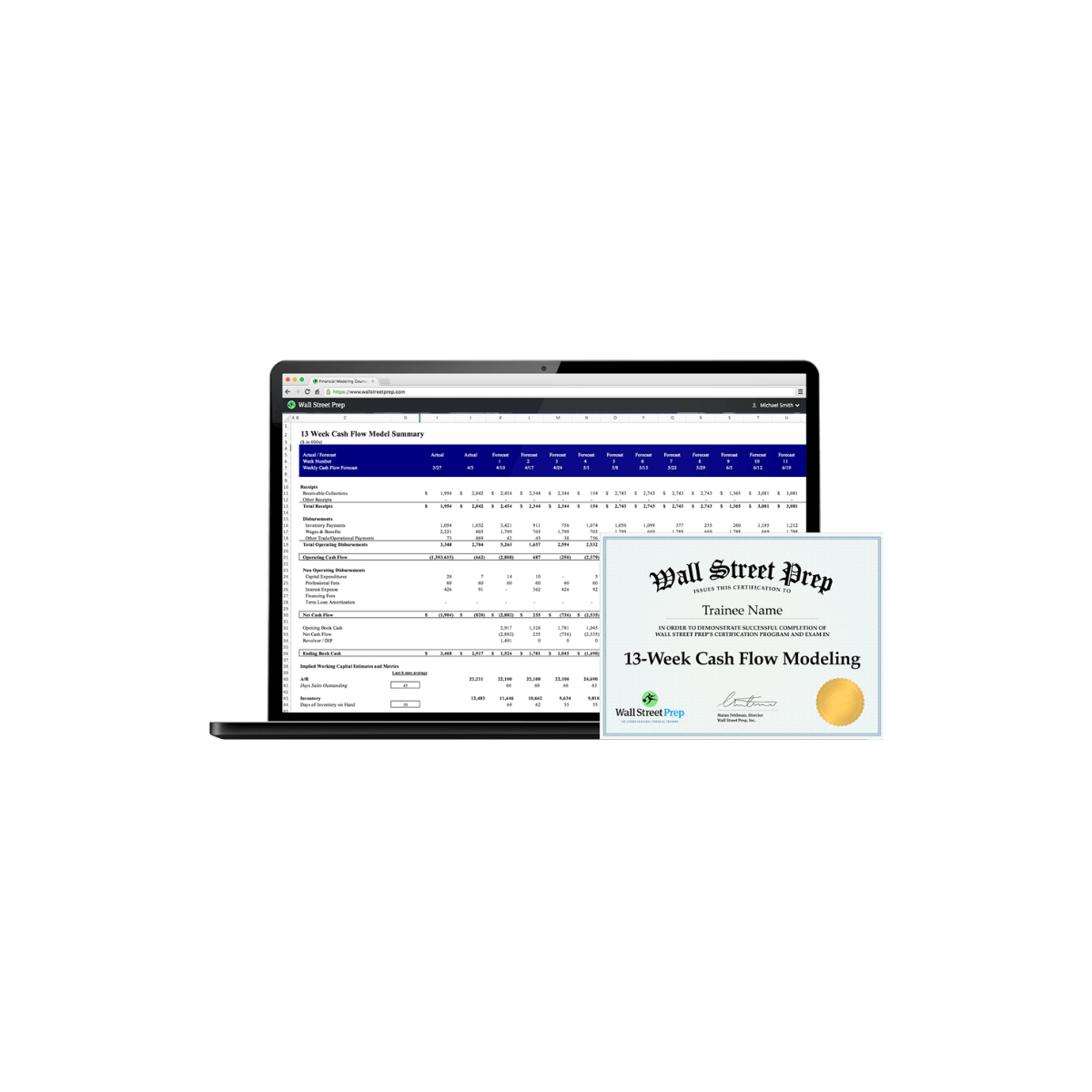The 13-Week Cash Flow Model – Matan Feldman – Wall Street Prep
Original price was: $997.00.$75.00Current price is: $75.00.
Description
The 13-Week Cash Flow Model: An Exploration of Matan Feldman’s Method with Wall Street Prep
Managing cash flow calls for forethought, management, and a plan to prevent catastrophe; it is like attempting to tame a wild beast. Presented by Matan Feldman via Wall Street Prep, the 13-Week Cash Flow Model offers companies looking to improve their cash flow forecasts a disciplined method. Understanding this concept can help you whether your position is financial genius of a corporate powerhouse or head honcho of a startup. This blog article will lead you through the key elements of the 13-Week Cash Flow Model, their importance, and how best to use them in your company.
Learning the 12-Week Cash Flow Model
Designed as a short-term cash flow forecasting tool, the 13-Week Cash Flow Model lets companies project their financial liquidity over the following three months. This approach offers a more detailed picture than yearly budgets or monthly financial analysis, which helps companies pivot rapidly in reaction to changes in their financial situation.
Why Should We Value It?
Among the main reasons of company failure are cash flow challenges; approximately 60% of small enterprises experience these at some point. Using a 13-week cash flow model helps companies avoid shortages of funds and maintain seamless operations. This preemptive strategy may help avoid last-minute financial pressures and provide a safety net for unanticipated costs.
Main Elements of the Model
Let’s break down the main elements of your own 13-Week Cash Flow Model before we discuss how to build it:
Starting with your current cash balance—that is, the sum you have on hand at the beginning of the period—you will be able to determine Your prediction is built around this.
Cash Inflows: This covers all sources of cash inflow—including loans, sales income, and any other financial infusion. Accurate cash flow projection is vital, as overestimating might result in dangerous judgements.
Like inflows, cash outflows cover all expenses, including utilities, rent, wages, and any other running cost. Classification of outflows is crucial for obtaining understanding of fixed and variable expenses.
The difference between total inflows and outflows is net cash flow. While a negative flow can signal future problems, a positive net cash flow shows more cash arriving than leaving.
Reflecting your financial situation at the conclusion of every week, ending cash balance This figure tells you if changes are required or whether you have the cash to do business.
Creating Your 13-Week Cash Flow Model
Understanding the elements now will help us to go right into building your own model.
1. Collect Historical Information
First gather past cash flow data to establish reasonable projections. Examine at least 12 months of data to spot patterns in spending, seasonality, and sales. Accurate projections depend on this in great part.
2. Project Your Income from Cash Calls
One needs a crystal ball for this stage! Examine your previous inflow patterns then project ahead. Think about things like:
Rates of change in sales
Variations in consumer payment terms
Changing seasons
If last year’s Q1 sales were $50,000 and increased by 10% per quarter, for instance, you may forecast Q1 of this year to be $55,000. Still, be careful; too much optimism might cause monetary problems.
3. Sort Cash Outflows
Record every anticipated outflow. This instrument will help you to simplify things:
Regular, regular expenses—such as rent or salaries—are known as fixed costs.
Variable expenses—that is, those depending on sales activity—such as raw materials, commissions.
If your fixed expenditures are $10,000 a month and your variable costs rely on sales, you could be smart to offer a reasonable projection for those varying expenses.
4. Figure weekly net cash flow.
The fun starts when one knows inflows and outflows! To find your net cash flow, weekly subtract cash outflows from inflows. This can help you to understand if you should look for outside money or whether you are still on a favorable course.
5. Change as Called for Necessity
The 13-Week Cash Flow Model’s simplicity is its beauty. The business climate might be erratic, hence change your weekly projections. It’s time to re-strategize if you see bigger outflows or less than projected inflows.
Practical Uses and Actual Success Stories
Think of organizations that have effectively used the 13-Week Cash Flow Model. This instrument helps companies in many different fields negotiate financial difficulties, therefore supporting stability and expansion as well. For example, several companies used this strategy to survive in the middle of notable income swings during the current epidemic.
Studies show that companies using 13-week models and other cash flow forecasting techniques are 50% less likely to run into cash flow problems. This number emphasizes the need of good forecasting and cash handling.
More Than Just Numbers on a Shevel
Knowing the 13-Week Cash Flow Model has advantages well beyond simple numerical computation:
Clearly seeing your financial situation helps you to make smart, educated company choices.
Knowing your financial flow can help you to reduce your worry about bills and unanticipated costs. One might value the peace of mind derived from a well-organized financial flow rather highly.
Regular cash flow reviews help to develop financial discipline that might improve performance all across your company.
Typical Mistakes and How to Prevent Them
Like any system, the 13-Week Cash Flow Model has some hazards. These are some typical mistakes to be aware of, and with pointers on avoiding them:
Overestimation of Income
One might easily get carried away with regard to development aspirations. Project inflows always from a cautious standpoint. Better yet is under-promise and overdelivery!
Ignoring Variability Seasonally
Many companies find that demand varies depending on the season. For a shop, for instance, the holidays may provide a surge in cash flow, then weaker months. Consider these elements when you build your model.
Not routinely updating
A stationary model is a worthless model! See your cash flow forecasts as live documents that should be changed regularly. Your projections may be much changed by staff tiredness or changes in the market.
Ultimately
Learning to ride a bike is like mastering the 13-Week Cash Flow Model; sadly, you will wobble a little first, but once you have the feel of it, you will not stop! Its disciplined approach will help you to have great understanding of the financial situation of your company.
Clearly knowing your inflows and outflows helps you not only prevent disasters but also position yourself for chances needing quick cash. Why therefore, when you have the ability to use good cash flow management, stay in the dark? Visit Wall Street Prep’s materials to explore the 13-Week Cash Flow Model more closely!
In essence, using this technique might be intimidating at first, but with time and consistent changes, you will discover it streamlines your financial path. Remember also that learning never stops. Keep tuned for further ideas on financial models that can change your cash handling strategy. Happy prophesying!



